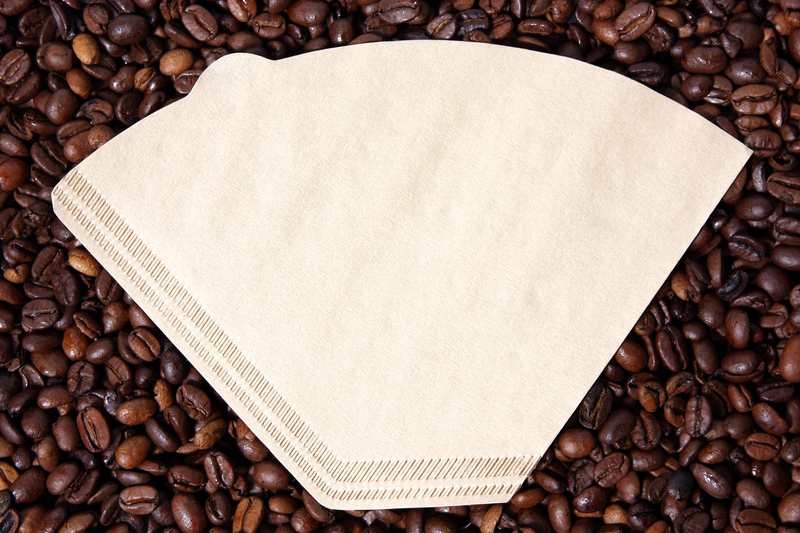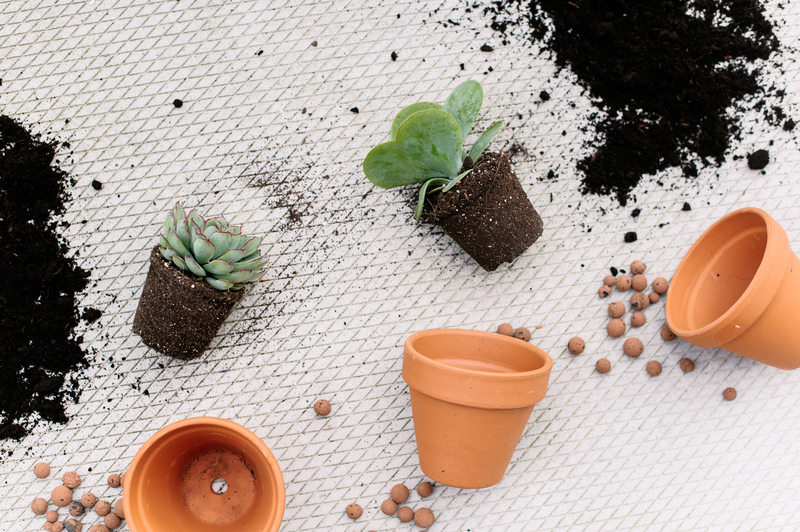The Ultimate Guide to Professional Car Cleaning at Home
Posted on 13/09/2025
The Ultimate Guide to Professional Car Cleaning at Home
Are you tired of paying hefty fees for professional car detailing? Do you want your vehicle to look like it just rolled off the showroom floor without stepping out of your driveway? Welcome to the ultimate guide on professional car cleaning at home. Whether you're a seasoned car enthusiast or simply want to maintain your vehicle in top-notch condition, this comprehensive article will walk you through pro-level steps, insider tips, and essential car cleaning techniques. Let's transform your ride from ordinary to extraordinary!
Why Clean Your Car Like a Professional?
Regular, thorough car cleaning does more than simply make your ride look good. Professional-level car cleaning offers practical benefits such as:
- Protecting the paintwork by removing abrasive dirt and contaminants.
- Maintaining interior freshness and reducing odors.
- Preserving resale value through meticulous upkeep.
- Preventing rust and degradation caused by neglect or improper cleaning.
With the right techniques and quality products, professional car cleaning at home becomes both achievable and cost-effective.

Must-Have Equipment for Professional Car Cleaning At Home
Before you begin, ensure you have the following tools. Investing in proper gear not only yields better results but also protects your car's surfaces:
- Two buckets (one for wash solution, one for rinse water)
- High-quality microfiber towels for washing and drying
- Soft-bristled brushes for wheels and trims
- Car-specific wash mitt (avoid sponges as they trap grit)
- pH-neutral car shampoo
- Wheel cleaner (acid-free and safe for alloys)
- Glass cleaner (for interior and exterior windows)
- Vacuum cleaner (preferably with attachments)
- Interior detailing brushes
- Plastic and leather cleaners as required
- Protective wax or sealant
The Step-By-Step Process To Professional Car Cleaning at Home
-
Step 1: The Initial Rinse
Begin with a thorough rinse using a hose or pressure washer. This removes loose dirt and helps prevent scratches during washing.
- Spray from the top down, focusing on heavily soiled areas such as wheel arches and lower panels.
Tip: If your car is very dirty, rinse twice for best results. -
Step 2: Wash Using The Two-Bucket Method
The two-bucket method is a hallmark of professional car cleaning at home. Use one bucket filled with clean water for rinsing your mitt, and another with diluted car shampoo.
- Dip your microfiber mitt in the shampoo solution, wash a section in straight, overlapping lines.
- Rinse the mitt in the clean water bucket before reloading with soap. This prevents dirt transfer and reduces scratching.
- Start from the roof, moving down to the sides, hood, and finally the bumpers and lower panels.
-
Step 3: Clean Wheels & Tires First
Wheels and tires collect brake dust and tough grime. Use a specialized wheel cleaner and brushes.
- Spray cleaner generously, let it dwell for a few minutes.
- Scrub all surfaces, including spokes and rims.
- Rinse thoroughly to remove all residue and prevent staining.
-
Step 4: Focus on Door Jambs & Exterior Details
Professionals give attention to areas often ignored.
- Use a detailing brush and soapy water to clean door jambs, fuel filler flaps, and under trim pieces.
- Wipe down with a microfiber towel.
-
Step 5: Drying The Correct Way
Dry using clean, soft microfiber towels or a dedicated drying towel. Pat surfaces gently, avoiding circular rubbing.
- Use a leaf blower or compressed air for hard-to-reach crevices and trims.
-
Step 6: Polishing for the Professional Finish
For light swirls and faded paint, consider using a car polish.
- Apply a small amount on a foam or microfiber applicator.
- Work in circular, overlapping motions. Buff with a clean towel.
-
Step 7: Applying Wax or Paint Sealant
Professional car cleaning always includes a protective layer. Waxing gives that showroom shine and shields the paint from UV, dirt, and contaminants.
- Choose either synthetic sealant or carnauba wax.
- Spread evenly, let dry to a haze, then buff off with a microfiber cloth.
-
Step 8: Streak-Free Glass & Window Cleaning
Crystal-clear glass is a sign of professional auto detailing.
- Use an automotive-specific glass cleaner and a lint-free towel.
- Wipe in horizontal, then vertical motions for a flawless finish.
-
Step 9: Interior Vacuuming and Detailing
Move to the interior. Remove all mats and shake debris outside the car.
- Vacuum seats, carpets, and all crevices with suitable attachments.
- For pet hair, use a rubber brush or dedicated remover tool.
- Wipe down hard surfaces and treat stains promptly.
-
Step 10: Treat Leather, Plastic & Upholstery
Each material needs a specific approach:
- Leather: Use leather cleaner and a soft brush. Don't forget a nourishing conditioner.
- Plastics: Clean with a plastic-safe solution and finish with trim restorer for UV protection.
- Fabric/Upholstery: Steam clean or use a fabric shampoo for tough stains.
Professional Detailing Tips & Tricks for Home Car Cleaners
Always Work in the Shade
Direct sunlight causes premature drying and annoying water spots. Choose a shaded spot or wait for cool, overcast weather.
Use Dedicated Cloths for Each Task
- Never use wheel brushes or towels on the paintwork.
- Color code or label your towels for exterior, glass, wheels, and interior for hygienic, professional results every time.
Refresh your Water and Cleaning Solutions Regularly
A dirty bucket equals a dirty car. Swap fresh water frequently to avoid micro-scratches and swirl marks.
Don't Overapply Products
- Using too much soap, wax, or polish can lead to streaking and residue. Less is often more in professional car detailing at home.
Eco-Friendly Car Cleaning at Home
Concerned about the environment? Adopt eco-conscious practices when cleaning your car at home:
- Use biodegradable car shampoos and avoid harsh chemicals.
- Choose waterless or rinse-less wash products when possible.
- Prevent soapy runoff from entering storm drains.
- Recycle microfiber towels and containers.
*Being green is easy when you commit to smart car care strategies.*
How Often Should You Clean Your Car at Home?
Frequency depends on usage, weather, and where you park. For optimal car appearance and protection:
- Exterior wash: Once every 1-2 weeks
- Waxing/sealing: Every 2-3 months
- Interior vacuum and wipe down: Once a month or as needed
- Deep interior detail: Every season or before resale
More frequent cleaning may be necessary for harsher climates, dusty areas, or after outdoor adventures.
Professional Car Cleaning at Home: Common Mistakes to Avoid
- Using household detergents: These strip wax and damage paint - only use pH-neutral car shampoos.
- Washing under the sun: Causes streaks and water spots.
- Skipping regular interior cleaning: Traps germs and accelerates wear.
- Reusing dirty towels or mitts: This leads to swirl marks on your car's surface.
- Neglecting tight spots: Don't forget behind badges, under mirrors, or inside door jambs.
Upgrading Your Results: Advanced Car Detailing at Home
Already nailed the basics and want to level up your DIY car cleaning routine? Try these advanced techniques:
- Clay bar treatment: Removes embedded contaminants for glass-smooth paintwork.
- Paint scratch repair kits: Minimize or eliminate minor scratches without a body shop visit.
- Paint decontamination sprays: Dissolve tar, tree sap, or stubborn substances.
- Headlight restoration: Polish away cloudiness for maximum shine and visibility.
- Ceramic coatings: Long-term protection and hydrophobic effects for the ultimate wow factor.

Frequently Asked Questions About Professional Car Cleaning at Home
Is it cheaper to clean your car at home than at a professional car wash?
Absolutely. While there's some up-front cost for quality cleaning tools and products, the per-wash cost drops dramatically over time. Plus, you get to control every aspect of the cleaning process, ensuring better attention to detail.
Will washing my car at home damage the paint?
Not if you follow the correct steps! Using the two-bucket method, microfiber towels, and pH-neutral products greatly reduces the risk of scratches and chemical damage.
Can I use dish soap or laundry detergent on my car?
No. These are too harsh and can strip away protective layers. Always choose car-specific washing products for professional auto cleaning at home.
How can I avoid water spots when drying the car?
Dry as soon as possible after rinsing, use high-quality microfiber towels, and avoid cleaning in sunny conditions. A quick detail spray can also help lift any residual minerals for a spot-free finish.
What's the advantage of wax or paint sealant?
Wax and sealant protect your paint from UV rays, oxidation, and contaminants while enhancing the shine and making future cleaning much easier.
Conclusion: Make Professional-Car Clean at Home a Habit
Following this ultimate guide to professional car cleaning at home is not only rewarding but also builds pride in your vehicle. With regular care, the right techniques, and high-quality products, you can achieve a stunning, showroom-quality finish right at home.
Ready to make your car gleam? Embrace these expert steps for professional auto cleaning at home, and enjoy a sparkling, well-maintained vehicle that stands out on every drive.
For more insightful automotive care tips and exclusive how-to guides, stay tuned to our car enthusiast community. Happy detailing!



